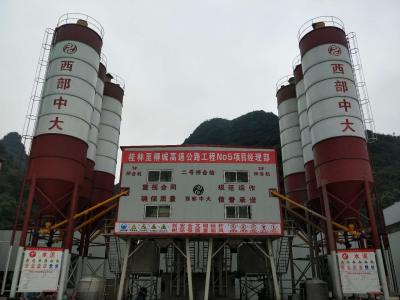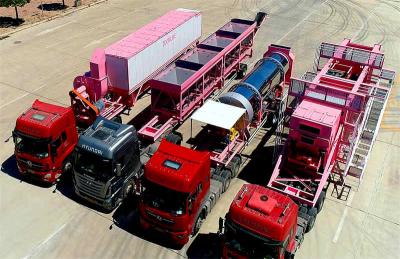Dry Motar Batching Plant
Dry mortar sets
Dry-mixed mortar is developed from the European construction market in the nineteen fifties, and has been commonly used in European countries for more than 40 years, and has been used for exterior wall insulation projects in Europe for 35 years. Because of the outstanding advantages of dry mortar such as water saving, energy saving, convenience, speed, environmental protection and strong adhesion, it has rapidly taken the European and American building materials market by storm. Nowadays, dry mortar is widely used as the main bonding material and exterior wall insulation material in developed western countries and many developing countries in the world, and there is also rapid development in Asia and other regions.
Dry mortar is mainly composed of dry sand, cement, thickening powder, fly ash and other raw materials, and special process mortar will also add cellulose ether or other small amount of additives.
The dry mortar plant is a production line that integrates these raw materials into a series of processes such as storage, internal conveying, precise proportioning and measuring, uniform mixing, and packaging of the finished product.
For a dry mortar production line with an annual output of about 20,000 to 30,000 tons, 4-6 raw material tanks are normally used, of which two large tanks are used for bulk cement and fly ash, and the remaining small tanks are used for light calcium, heavy calcium, sand, small materials, etc. Bulk cement and fly ash into the tanks do not need lifting equipment, relying on the pump truck to pump in. Light calcium, heavy calcium, sand and small materials need to be lifted into the small tanks using bucket elevators. The clever material distribution system supports a bucket elevator distribution type operation, thus avoiding wasted resources. With the cooperation of metering screw, the metering system introduces the raw materials in the silo into the metering silo and realizes the metering of raw materials through the data feedback from the sensor. The measured material is guided into the main bucket elevator through the screw conveyor and lifted to the upper part of the mixer to be mixed in the bin. The silo is pneumatic with big opening door, which can quickly put the materials to be mixed into the gravity-free mixer and realize the continuous production of dry mortar.
The large proportion of raw materials such as cement can be measured by hand through the elevator into the premixing bin, cellulose, rubber powder and other small proportion of valuable masterbatch can be measured through the electronic scale into the admixture hopper, compared with the simple type and further because of the mixing machine mixing through the valve bag packaging machine or open bag packaging machine automatically measured packaging. Belt conveyor can be used to transport to the finished product stacking area. It has the characteristics of moderate investment, short construction period, fast investment. The investment in equipment is generally between 100,000 and 350,000, and the general output can reach 5-15 tons per hour. There are 3-5 operators, the height of the equipment is between 6-10 meters, and it covers an area of 20-30 square meters.
Compared with similar products in China, this machine has the following significant advantages.
1. Good dispersibility.
The unique structure design inside the mixer can effectively disperse polypropylene fiber and wood fiber, which completely solves the problems of segregation and fiber secondary agglomeration caused by the different specific gravity of the materials.
2. Wide range of use.
The equipment can meet the production needs of dry mortar with different performance requirements. Such as: masonry mortar. Plastering mortar. Mortar required for thermal insulation system. Decoration mortar and other dry mortar.
3. High cost performance.
It is a production project for exterior wall insulation and decorative mortar, which not only has low investment and high efficiency, but also avoids the idle equipment and waste of resources caused by too large investment.
4. Simple and convenient to use.
The equipment has the advantages of small footprint, low energy consumption, easy operation, and can be installed and used directly without foundation. The output is 3-5 tons per hour, and 3-6 workers can operate it.




